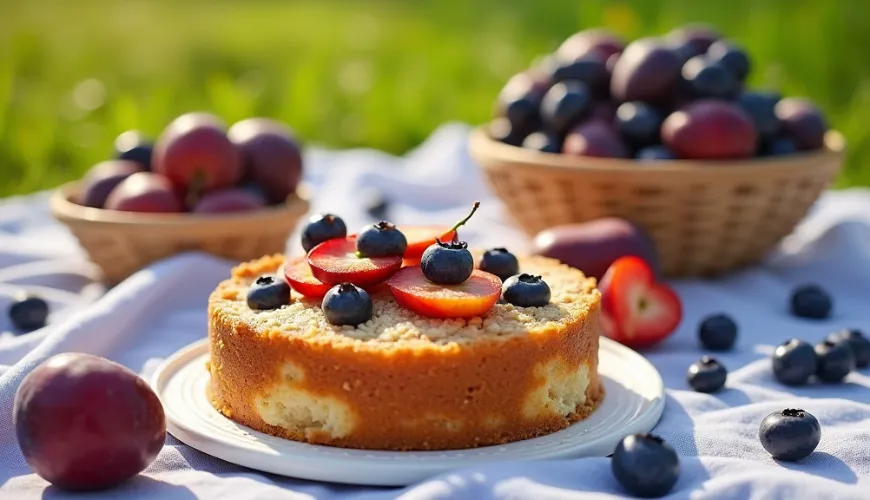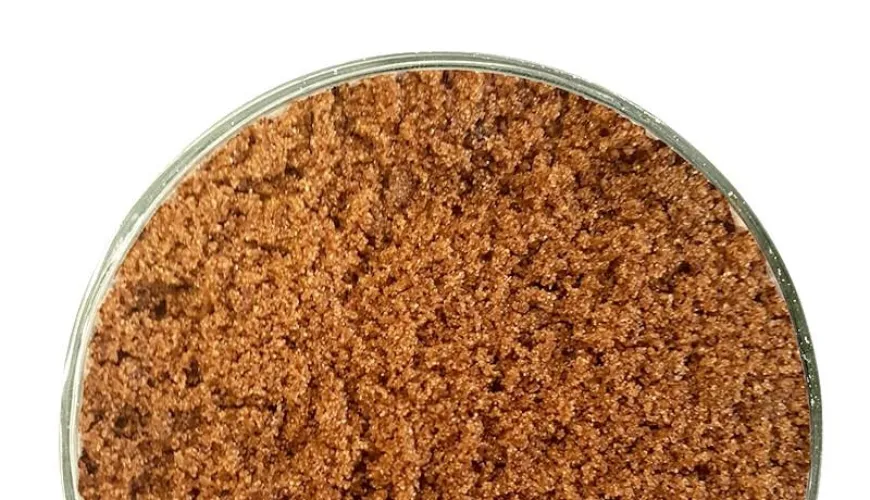
Discover the magic of gluten-free baking with this moist gluten-free cake

Gluten-free baking has become a common part of many households in recent years. Whether due to celiac disease, gluten intolerance, or simply an interest in healthier eating, more and more people are seeking tasty alternatives to traditional pastries. A popular gluten-free cake is no exception—and fortunately, it doesn't have to compromise on taste or texture. Quite the opposite.
Many recipes for gluten-free cakes today can compete with traditional pastries—they are fluffy, moist, just sweet enough, and most importantly, often more nutritious. Whether you're craving a gluten-free cake with quark, apples, or a quick mug cake for a weekday, you can now easily work magic in the kitchen without wheat flour.
Why Bake Gluten-Free Even Without a Diagnosis
Gluten itself is not harmful to most of the population, but an increasing number of people suffer from its intolerance or celiac disease. Moreover, gluten-free flours often offer interesting nutritional benefits—such as buckwheat, rice, or almond flour, which are naturally gluten-free and rich in fiber, proteins, or healthy fats.
A good example is a gluten-free apple cake, which can be prepared with rice flour and finely ground oats. Combined with fruit and maybe a bit of cinnamon, it fills the house with a nostalgic Sunday aroma.
Today, a variety of alternative flours are available in regular supermarkets—coconut, tapioca, chickpea, or corn flour. Each works a little differently, but with a bit of practice and a willingness to experiment, you can create the perfect dessert that will delight even those who don't react to gluten.
Mug Cake Classic in a Gluten-Free Version
There's not always time to weigh ingredients and spend hours in the kitchen. Fortunately, a gluten-free mug cake is the perfect solution. You only need basic ingredients like eggs, oil, sugar, gluten-free flour (such as Schär flour mix or your own combination of buckwheat and rice), and one mug as a universal measure.
You can add cocoa, quark, grated carrot, or apples to the batter. A 250 ml mug serves for all ingredients, significantly speeding up preparation and cleanup. The result is a moist and soft cake, ideal as a quick snack or dessert with coffee.
One mother of two small children shared her experience of baking a gluten-free apple mug cake every Sunday evening—the children help mix the ingredients, and the cake is ready in the morning for school lunchboxes. Simple, nutritious, and stress-free.
Gluten-Free Sheet Cake
When it comes to larger quantities of desserts, such as for birthday parties or weekend visits, the gluten-free sheet cake comes into play. It's easy to prepare, slices well, and thanks to the large surface area, has the perfect balance between a crispy edge and a soft center.
A popular variant is a cocoa cake with coconut topping, but creativity has no bounds. The batter can be complemented with seasonal fruits—plums, apricots, blueberries, or currants add freshness and natural sweetness. For more festive occasions, you can add mascarpone cream or a dark chocolate glaze.
Tip: To achieve a really moist texture, add a bit of sour cream or plain yogurt to the batter. In gluten-free baking, these ingredients often help break up crumbliness and add moisture to the cake.
Quark—The Secret Weapon for Moist Cakes
One of the most popular variants is a gluten-free quark cake. Quark not only adds softness and juiciness to the cake but also enriches it with important proteins. Combining quark with lemon zest or vanilla gives a fresh yet rich taste.
Interestingly, quark cake can also be prepared in a vegan version—using a plant-based alternative "quark" from cashews or soy, and replacing eggs with chia seeds or apple puree. The result? A dessert that tastes great to the whole family, without guilt and with respect to various dietary needs.
A quote from a well-known Czech food blogger sums it up:
"Gluten-free cakes are no longer just bland substitutes. They are full-fledged treats that you'll love even if you tolerate gluten without issues."
Apples and Cinnamon
When it gets chilly outside and leaves start rustling underfoot, it's the perfect time for a gluten-free apple cake. Combined with nuts, cinnamon, and perhaps a bit of honey, it creates a fragrant dessert that evokes childhood memories at grandma's. And the best part—apples keep the cake moist for several days, making it perfect for a sweet treat during a weekend visit.
A great combination for preparation is almond flour with a pinch of coconut, which adds a subtly exotic touch. If you top it with a crumble made from gluten-free oat flour, sugar, and a bit of plant-based fat, you'll create a rustic dessert that looks and tastes like it's from a homemade bakery.
A simple list of basic variations that have proven successful in gluten-free baking:
- Gluten-free quark cake with lemon zest
- Gluten-free apple cake with cinnamon and nuts
- Quick gluten-free mug cake with cocoa
- Gluten-free sheet cake with seasonal fruit
- Coconut gluten-free cake with chocolate glaze
The magic of gluten-free baking lies precisely in the fact that there is no "right" recipe. The key is the willingness to experiment—substituting flour based on current inspiration, adding homegrown fruit, or choosing an alternative sweetener. Everything is allowed as long as the result is delicious.
Whether you avoid gluten due to health restrictions or are just looking for new ways to bake healthier and with more variety, gluten-free cakes offer endless possibilities. And once you make a fragrant cake with apples and cinnamon that melts in your mouth, you might wonder—why did we ever need gluten in desserts?

